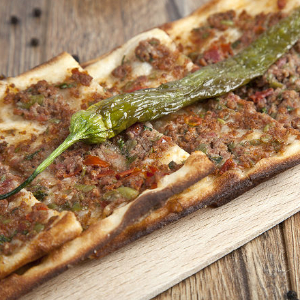Yesterday we toured some of the less-known mains and sides of Turkey – an ancient and regionally influential culture lying smack between Europe and Asia. Today, we’ll look at some of their most popular and essential breads. Don’t expect to see any conventional ‘loaves’. Hope you enjoy sesame seeds!
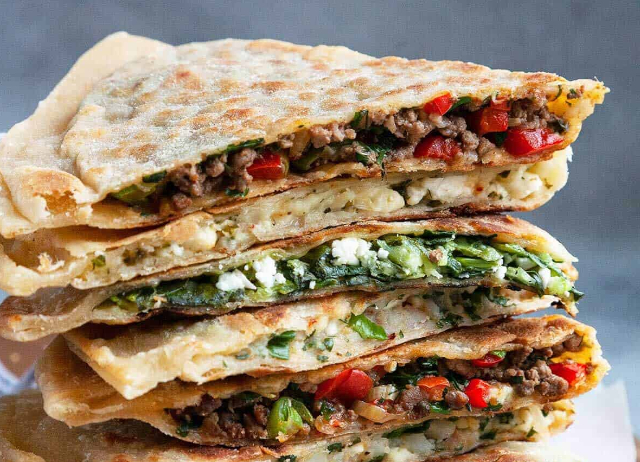 Gözleme: The Turkish analogue of Italian Calzone. Comes with
Gözleme: The Turkish analogue of Italian Calzone. Comes with
as many different stuffings as you can imagine!
Turkey has a rich and varied national cookbook. Many nation-wide favourites have their own trademark regional twists. So it is with the country’s many beloved breads. You won’t see Pita (the ubiquitous bread of the Eastern Mediterranean), or Yufka (Turkish Crèpes) or Bazlama (Turkish Tortillas) in our list today. We’re going to focus on less-known breads that Turks enjoy every day…
Pide Ekmek: Turkey’s national go-to daily bread is made simply, from flour, yeast, salt and water, and formed into a round, flat loaf with the fingers, brushed with egg wash and sprinkled with nigella, poppy or sesame seeds.
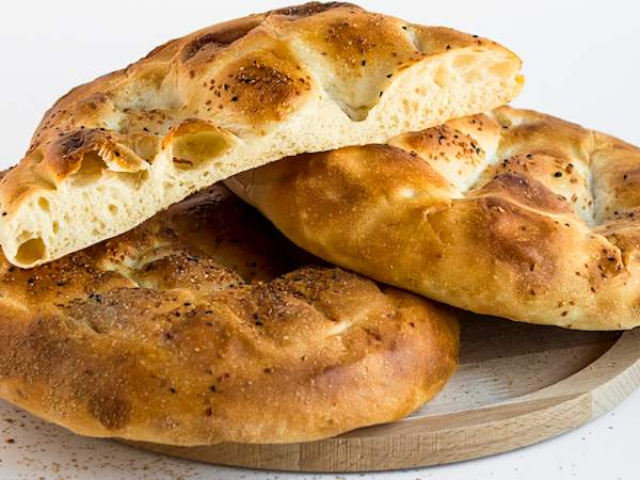
Not one of the best-looking breads you’ve ever seen, it’s a true Turkish staple, served at breakfast, lunch and dinner. Pide Ekmek is used universally eaten as a snack with dips. And it’s the traditional base for the Tombek, a Turkish national sandwich filled with shredded meat.
Ramazan pidesi: Ramazan is the Turkish spelling for the holy month in Islamic culture, and there’s a special national bread for the season. Ramazan pidesi is much like Pide Ekmek in its composition but with oil or butter added. It’s characterized by a criss-cross pattern and/or thumbprint indents on top. Again like Pide Ekmek, it’s traditionally topped with sesame seeds.
Mısır ekmeği: Unusual among Middle Eastern cuisines, this is a cornbread concoction popular along Turkey’s northern Black Sea cost. It’s also notable in that it uses no leavening agent.
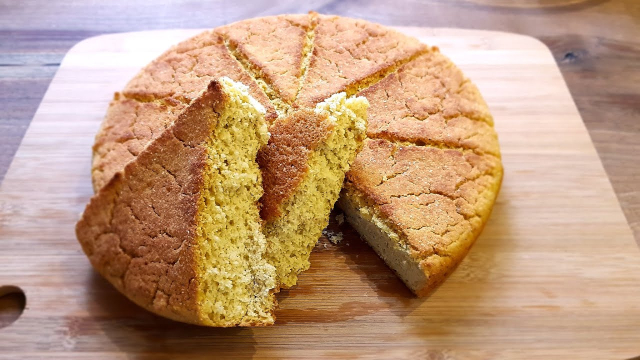
Like western cornbread, it’s commonly eaten as a snack with butter, jam, cheese and various dipping sauces. Seeds, dill or cheese are sometimes added to the dough to augment the flavour. It’s also made with sardines in the dough to be consumed with yogurt as a meal.
Etli Ekmek: A very thin crispy snack bread from Konya (see photo, top of page), a sizeable city in south-central Turkey. The name literally means ‘bread with meat’. Its ingredients are very similar to Pide Ekmek, but the dough is pressed out very thin and topped with ground beef, tomatoes, onions and peppers, and sometimes cheese. The similarity to Pizza is obvious, but so are the differences.
Simit: This is essentially a Turkish Bagel. Street vendors flog them on every corner. The name comes from the Arabic word for ‘fine flour’, and the treat has been part of Turkish life for more than 500 years.
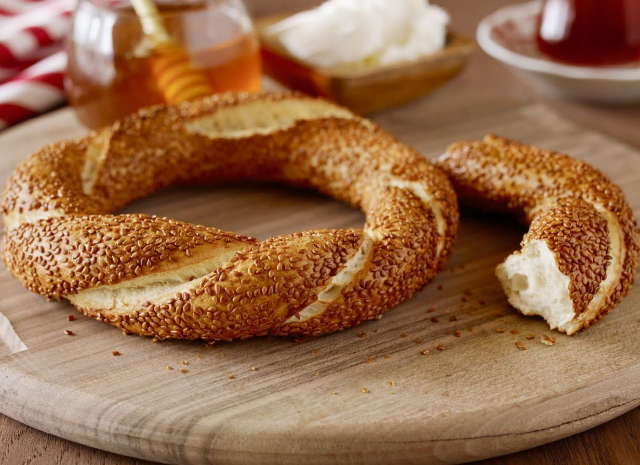
It’s commonly eaten at breakfast with sweet toppings, and at other times with savoury accompaniments of cheese, meat or vegetables.
Gözleme: We’ve seen analogues to Pizza and Bagels in our list of Turkish breads. Now, we have something that shares some basic characteristics with Italian Calzone. Gözleme is a stuffed flatbread notable for the addition of yogurt to the dough to prevent the bread from becoming too stiff or crunchy. Depending on who makes it, Gözleme may be stuffed with meat, veggies, eggs, cheese or mushrooms. Yes, there are vegetarian versions. Gözleme is the national street food, snack and fast food – found everywhere food is served or sold!
Make a meal of it!
Indeed, several of Turkey’s signature breads can constitute a full meal. And it’s clear that Turks could not survive a single day without their beloved breads. But they love their classic deserts and beverages just as much, or more – as we’ll see tomorrow…
~ Maggie J.

